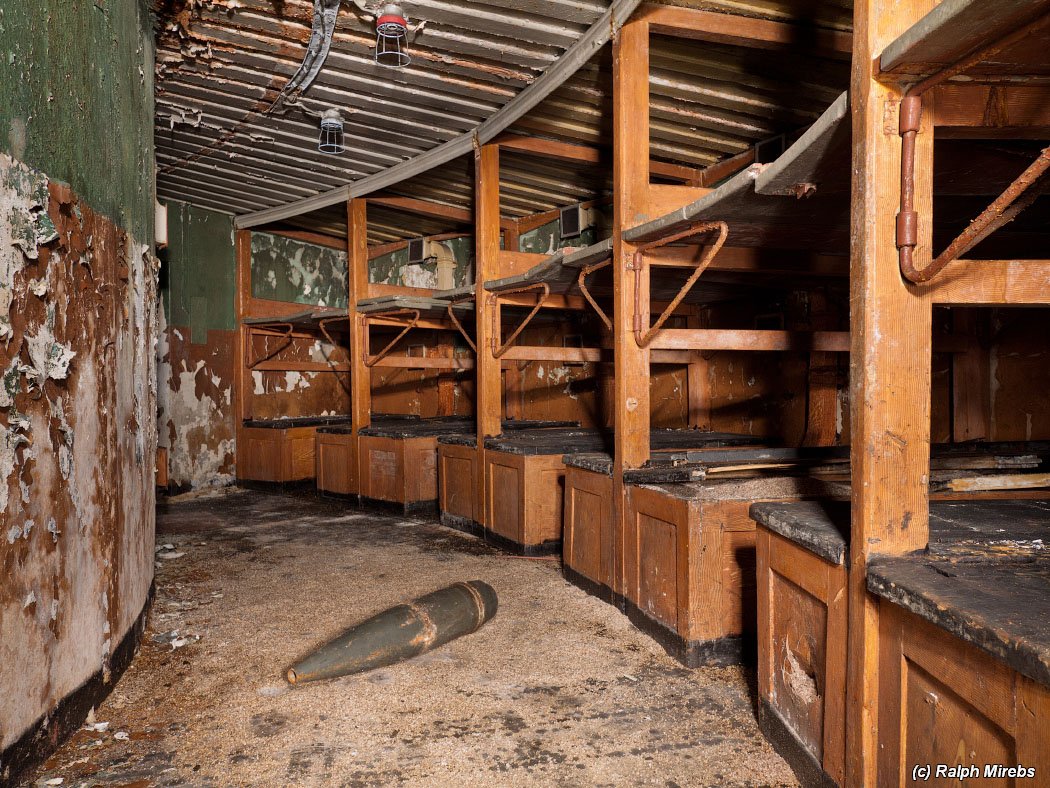An abandoned artillery battery
Today I am going to tell you about a visit to the MB-2-180 coastal artillery turret batteries.
Built in multiple regions of the Soviet Union during the mid-1930s through the early 1940s, they were a powerful force of coastal defense, but after the advancement in missile munitions development their importance in defense decreased significantly.
However, the batteries were still maintained in an operative condition with shooting practices held from time to time. Then came the 1990s, and during the times of chaos and down-sizing of the navy the military abandoned them and left them to winds and marauders.
The guns that were easily accessible were soon completely sawn apart for scrap metal. From some of them only the gun barrels were taken, others were robbed of parts of their interior structure. Despite all that, quite a few relatively intact guns have survived to this day.
An artillery battery is not only guns but also an underground powerhouse, fuel storage, a command center, distance measuring instruments and an intricate network of underground posterns connecting all these facilities.
When I was planning a trip to one of these batteries located on the Kildin island I intended to carefully examine everything there is but upon arrival I was slightly shocked by the size of the site and thus the amount of work that I was facing.
The battery consists of two turrets with two guns each. The guns themselves are covered with armored protective hoods (they actually look like turrets).
Inside them guns are located, and the rest of the structure is under them, in the ground. That is what the turret looks like on the inside.






As you can see, the guns are pointed upwards and there is no access to the bolt. But I also took some photos in another tower, where the situation is different.


Under the turret there is an ammunition bunker consisting of a circle of metal shelving units and an ammunition feed system in the center of the circle. This construction matches the rounded shape of the turret.




Behind the ammunition shelving units there are officers’ living quarters also arranged in a circle-like manner. These are wooden lockers for storage, beds and firearms storage units.




After WWII the batteries were upgraded with regard to the invention of nuclear and chemical weapons, meaning that they were hermetically sealed against radioactive dust and chemical agents.
That is why there is an air-filter unit that is adjacent to the living quarters and separated from it by a hermetic door.
As it turned out, the floor in the air-filter unit is covered in boxes full of empty machinegun belts from anti-air gun mounts.



There is also a lavatory to serve the needs of the staff.


On a lower level, there is a shell storage that is also ring-shaped. Heavy-caliber shells do not have a case but consist of a steel solid shot rigged with explosives.
One of these empty solid shots can be seen in one of the earlier images — it is lying on the floor. However, in order to push it out of a gun barrel additional explosives are required that have to be loaded separately into the gun.
These shells were stored inside special bodies in designated shelving units and fed into the guns in a “package”.



The ammunition feed came through specially designed hatches that went through the wall. There are also devices indicating what type of ammunition is required at a given moment (these types have different efficiency; it is also possible to not only fire steel solid shots, but use specific types of charge — illuminating, chemical etc.)
In the turrets themselves devices like these are also present, as well as in the ammunition storage rooms. The signal to the devices was transmitted from the command center.



After passing through the hatches the charges ended up in the central part of the lower level and then were passed to the upper levels.

There are also compressed air supplies, a compressor and other equipment on this level.



All the structures were connected by various kinds of underground posterns some of which are shown below.




In conclusion I will show you images of a few different turret types. Sadly, I did not have the heart to publish images of the turrets with cut off barrels because they look too pitiful.
I decided to show only those that still preserve their beauty. A person is also pictured for accurate size rendering.

Images by RALPH MIREBS, reproduced with permission






